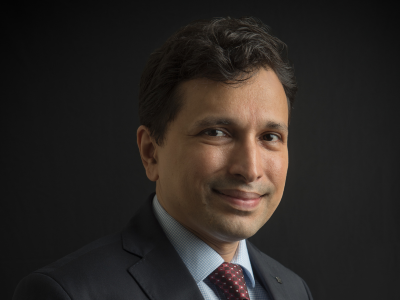Listen to this article
Part 1
Part 2
What is your medium-term outlook on equity markets? What are the key triggers and risks for the markets from here on?
Overall, markets seem stable with lower risk in the medium term. This can be attributed to relative decrease in the demand of oil prices in India and lower escalations from the geopolitical conflicts in Israel and Russia-Ukraine. Also, with the outcome of the recent state general elections, markets are likely to be stable but having said that markets can always surprise us. The market outlook remains constructive with large cap valuations in check; caution is needed with respect to mid and small caps which are more stretched. This could add some volatility to the market.
Many MFDs are finding it difficult to deal with lumpsum money as they are not comfortable with valuations. What are your views on the valuation and which category of funds should they recommend to clients for lumpsum investments?
People concerned about lumpsum investing, fear weak market sentiments and expect that there will be a market correction. In my opinion, markets might look expensive but bear in mind, earnings have also increased. Now for lumpsum, we recommend less volatile hybrid funds like balanced advantage funds where asset allocation takes place in both equity and debt classes and multi asset funds which can also invest in precious metals like gold apart from debt and equity. Even in equity, large cap funds look promising and MFDs can look to rebalance the portfolios of the investors who are heavily invested in mid and small caps.
India is on its path to become 5 trillion-dollar economy, what are the key factors that will drive India’s growth story?
India’s economic growth will depend on three pillars
- growth in consumption
- investments both from private and government sector
- net exports
Consumption growth is likely to be steady due to our demographics but there has been a slowdown due to covid and recovery is yet to come back to pre-covid levels especially for the lower income groups.
Also, investment to GDP ratio hasn’t done well since 2014 as capex from private sector hasn’t really picked up. There is a need for increase in investment specifically from the private sector, whereas government spending has been fairly steady. Government has also put a lot of focus on domestic manufacturing by giving incentives for large scale investment in renewable space, semiconductors, speciality chemicals under PLI scheme which is done to gain traction in these sectors. The real estate sector is also looking for increased investments post the downturn since 2014. I feel this is an ideal time for private sector investment as corporate balance sheets are in good shape to facilitate this and grow.
Exports have been weaker this year so India needs to pick up in that sector. We are steadily making a big name globally, be it in textiles, auto ancillary, pharma, engineering and moreover with global chain trying to diversify out of China, India should take advantage of the situation and capitalize on it.
AMFI data shows that a few of your equity funds like Aditya Birla Sun Life Frontline Equity Fund and Aditya Birla Sun Life Focused Equity Fund are unable to outperform their benchmark over a five-year period as on October 2023. What are the key reasons for this and how do you plan to regain momentum?
If you look at 5-year period since 2018, there was a large underperformance in the market - only a few high growth companies fared well. To rectify this and get better returns for our funds, we tried to recalibrate the funds, by being more benchmark aware and lowering the deviation from the benchmark. We mainly focused on getting stock selection right, keeping a good mix of growth & value, as their trend keeps varying in cycles. For example, till 2020 growth stocks were doing well and now value, so we have tried to keep a balance of everything so that we are not left behind in any scenario. We are trying to find out ways to beat the benchmark and manage risks at the stock and sector level. We take active risk but in a measured manner. We keep a target to always beat the benchmark by at least 1% or 2%.
Markets is very dynamic and offers a lot of learnings every now and then. What is one recent learning that you would like to share with us?
The first learning is that you need to respect the market and not have a biased opinion on any sector while selecting funds. In selection of fund, one should keep an open mind and look at companies purely on an objective basis. The best examples are the PSU banks companies which have done unexpectedly well. Post identifying the sector, you should also investigate what is driving this trend to get a deeper understanding.
Secondly, well-performing companies in the market will continue to do well as they are being driven by a strong narrative behind them. If the outlook of a stock is continuously good, then don’t be in hurry to sell, as you might miss the bigger gains. You should hold onto the winners and not be too bothered by valuations unless narrative around it changes. Many well-performing sectors might give more than expected returns. For example, the power sector companies outperformed their historic values, and one would sell the stock at 40% looking at the recent numbers but the power sector got re-rated and outperformed all its past numbers.
Lastly, here’s a quick rapid fire -
- Top 3 sectoral picks - real estate, digital and technology, industrial manufacturing
- 3 sectors to be wary of - global cyclicals like oil and gas, commodities like metals and staples to some extent
- 3 fund categories that make sense at the current juncture - multi asset funds, large cap funds, multicap and flexicap funds to be able to participate in mid and small cap with less volatility, thematic funds like banking and financial, digital India for the medium term for investors who have bigger risk appetite.





